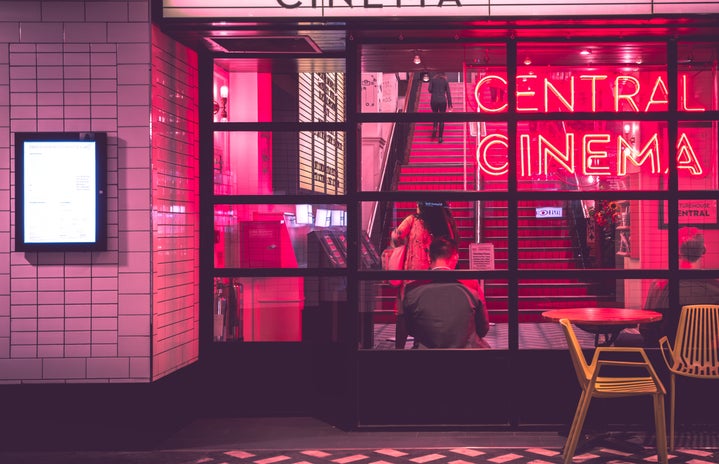Want to sit back and watch scary movies from the eighties, from the nineties –– hell, even the early two thousand? I know horror isn’t entirely inclusive in who it scares and who it does not, but there is still a general theme in older horror movies –– they’re just not scary anymore.
The trick to horror is being unsettled and unsuspecting. When a trope, an idea, or a way of doing things has been seen so much — it dies.
But there’s a revision in the horror genre. One example I saw first in the blessedly cursed 2018 film Hereditary and the other one I was able to witness again in the Netflix Original The Haunting of Hill House.
What makes this ten episode series and two-hour movie different from the other trash horror movies that have been coming out these last couple months (see: Slender Man, Halloween, Truth or Dare, etc.)? The answer is surprisingly simple: quality.
The horror genre is almost widely regarded with being inherently cheap. It’s why most horror movies are even made. They can be rapidly produced at cheap rates and people will still see them just for the aspect of being scared. Even the awful ones that everyone agrees are awful still turns up some sort of profit (i.e. Truth or Dare) because the cost to make it was so low that the lower amount of people who went to see it out of it simply being a horror film paid it back easily.
to sit and watch a movie or a film that puts genuine quality into what it is making is not only refreshing, it’s unlike anything we’re used to.
Image from Google Images
Cheap gimmicks:
Cheap gimmicks (see: Jumpscares) have been used so excessively, that besides the initial shock, they just don’t hold any long lasting effect. That’s why I’ve been enamored by a simple trick that has appeared in both Hereditary and The Haunting of Hill House. The gimmick is simple. You’re watching a scene. The scene lands on one thing for far too long. You change your attention from the foreground to the background. And there’s something there. Something that was there the whole time and you did not even realize. And then after your heart restarts from the shock, you bury yourself back under your covers.
It is a gimmick, but it is so much more terrifying than a simple there-and-gone jumpscare; And I am loving it.
What’s another horrific flaw in the horror genre?
Image from Google Images
The Characters:
It usually gets to the point within a film where I don’t care who dies. Hell, I can usually barely tell who they are as they’re getting killed. Was that the first girl? The girl’s friend? The stereotypical jock? Or the less stereotypical caring jock who is still somehow a stereotype? It doesn’t matter. It doesn’t matter because at the end of the day those characters are only there to run around until they get killed or somehow survive because that’s the only care given into the genre.
So when Hereditary and The Haunting of Hill House took the time, the dedication, and the storytelling skill to build characters with the same expectancy one would see in a television drama, or a character based adventure, the stakes are automatically raised. Suddenly, you don’t want the characters to die. When they are in danger, you feel it more. You’re not asking or begging the dumb blond to reach her demise already. You are genuinely afraid the developed character with human motivations and actions is going to end up in horrific trouble.
It’s fantastic.
Image from Google Images
Explanations:
Another unfavorable part of the horror genre is the reasoning behind what is occurring on screen. Usually, the actual fear lies in the middle –– it lies in the unknown, in the fear of what might be responsible, what might be hiding under the bed or in the walls. What I see repeatedly in horror films are unnecessary twists that are just stupid (The Boy), or just dumb explanations (The Bye Bye Man).
This is also where Hereditary and The Haunting of Hill House diverge just slightly. At the end of Hereditary, an explanation is made, and while it fits well and makes sense, it is not nearly as scary as the two hours of an anxiety attack you sat through to get that conclusion. It wraps everything up with a simple notion of explicit doom and there’s the end of your movie. Still a good movie, still a good ending, but this is where The Haunting comes in.
The Haunting at Hill House has an ending that explains enough about the questions raised throughout the plot but leaves enough uncovered to keep the fear going. Why did these things happen? Because it is the supernatural, not the natural world we’re used to, and we’re not supposed to know more than that. It leaves an unsettling feeling in the air after the conclusion wraps up. I enjoyed it much better than lousy explanations desperate to fit a plot that didn’t consider how it is to end until it got there.
Image from Google Images
Stupid Decisions:
In order to propel characters into trouble, you see a repetition of weird and stupid decisions happen on screen that tends to pull you out of the film as you sit there holding your head thinking “you could have survived if you had a couple more brain cells.” Likewise, you tend to seem a repetition in tropes that don’t always make sense but are constantly needed to bring about the danger in a time when almost everyone in the developed world is constantly in contact with each other. So phone lines get cut, cell phones get left behind in cars and danger zones, and signals just stop working.
Both Horror pieces I’ve mentioned figure out a way around this that adds layers of doom and gloom to the events. A feeling of no escape. Of being doomed from the start. This inevitability to the character’s demise or horror is woven in from the get-go. You, the viewer, know this as it is skillfully portrayed, but the people on screen don’t, making their attempts to escape futile and terrifying.
Likewise, both horror pieces take on a theme of fear that, not only gets around the “no signal” trope but also stand to invite new levels of horror in the present time. For a large part, the horrors remain contained within the characters heads. It makes sense that no one would call for help, because when they do, they won’t be believed. It makes sense that the phone won’t be used in a time of danger when the character is the source of the danger.
Image from Google Images
I mentioned before that old horror movies just don’t seem scary anymore. Michael Myers running around with a knife through a suburban neighborhood just doesn’t cut it; not when that is just another night in America, I mean, seriously. The intricate horrors of The Ring can’t stand up through technology. The world has changed. What scares us has too. And instead of trying to reinvent that fear, or go for shock value, a deeper analysis of what scares us and why must be taken to the screens.
Hereditary and The Haunting of Hill House do this wonderfully.



